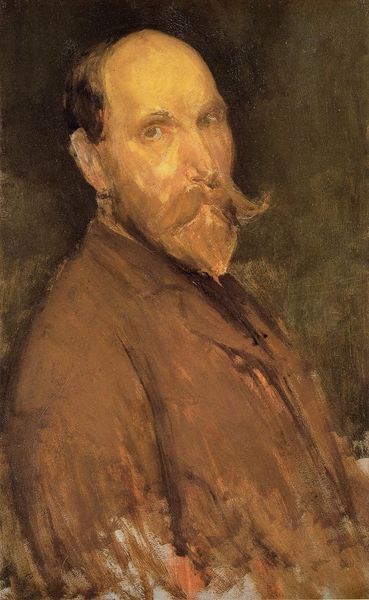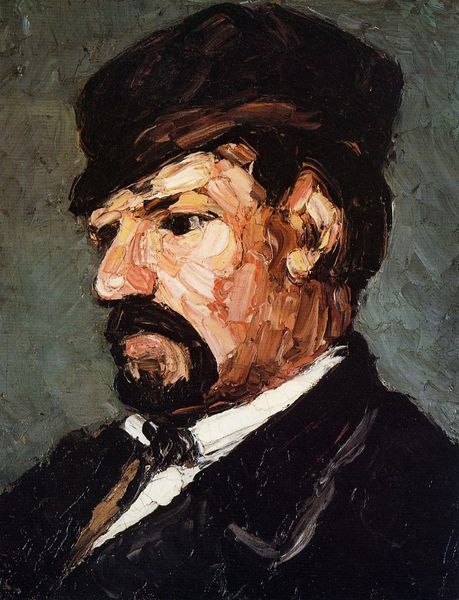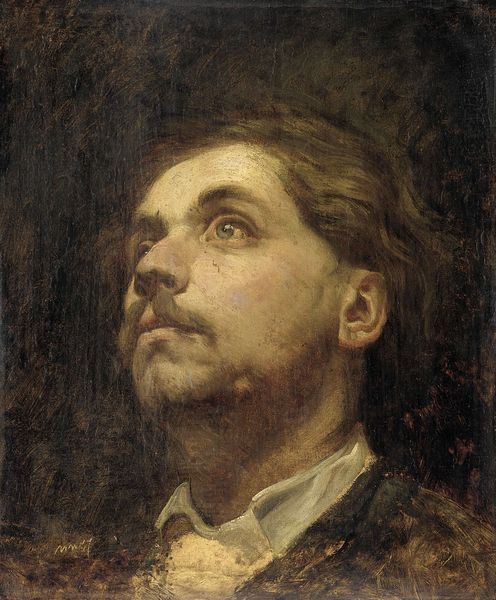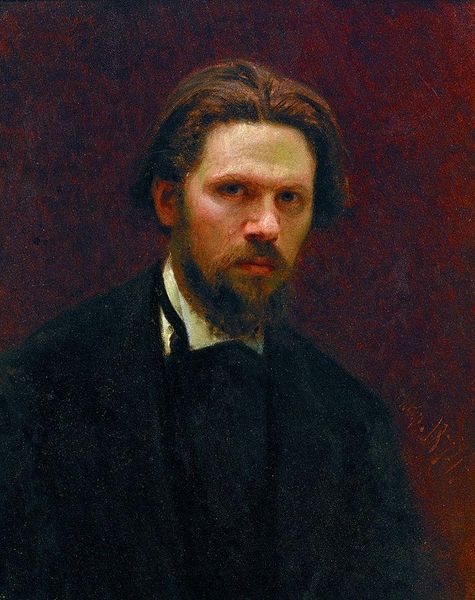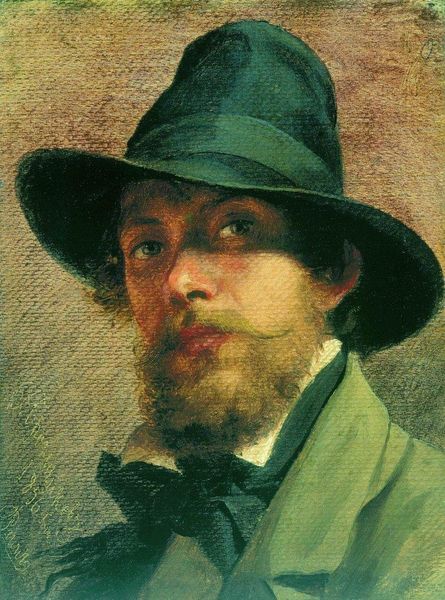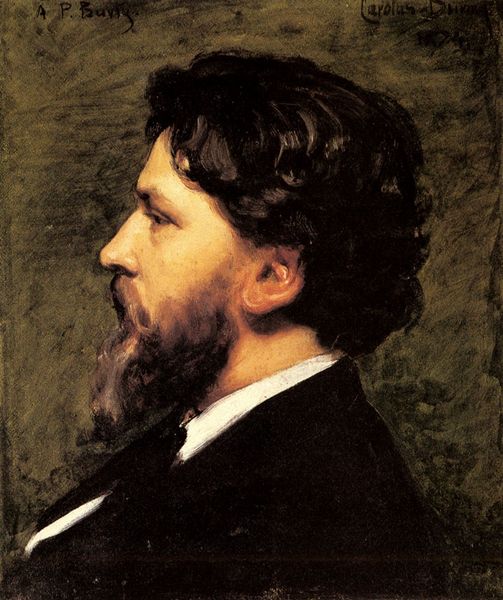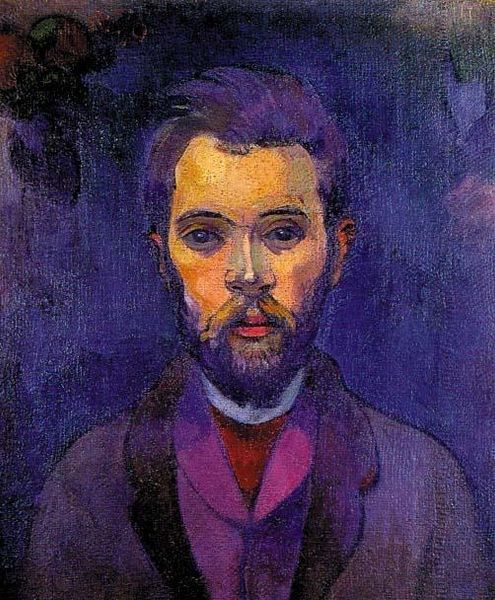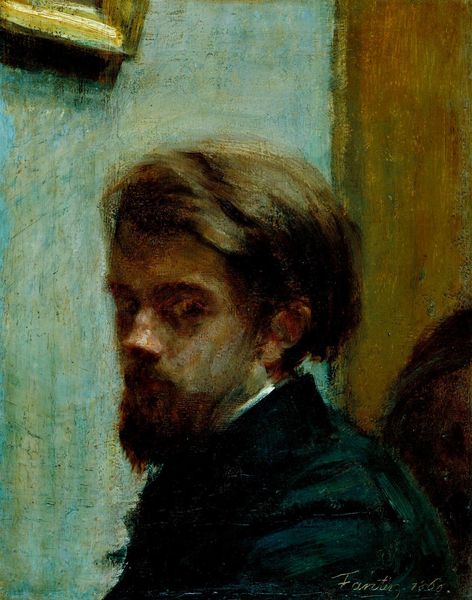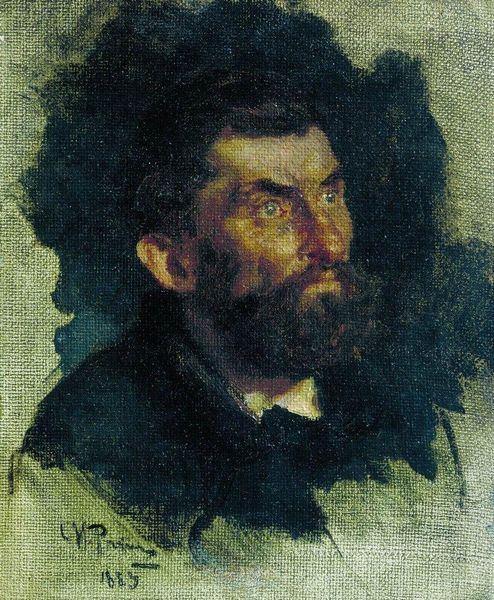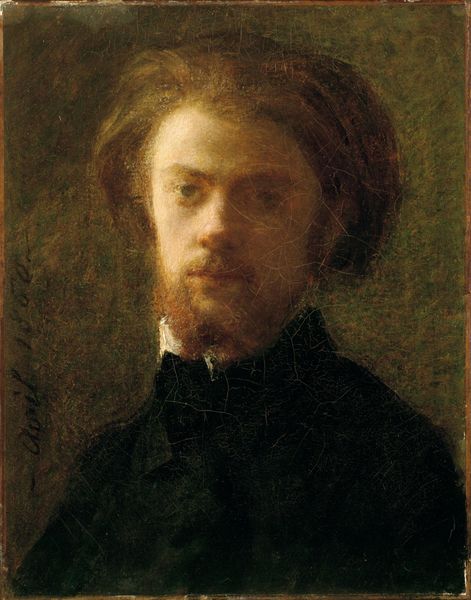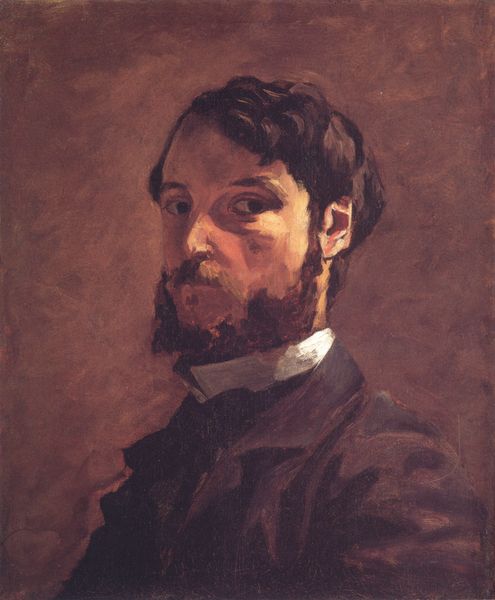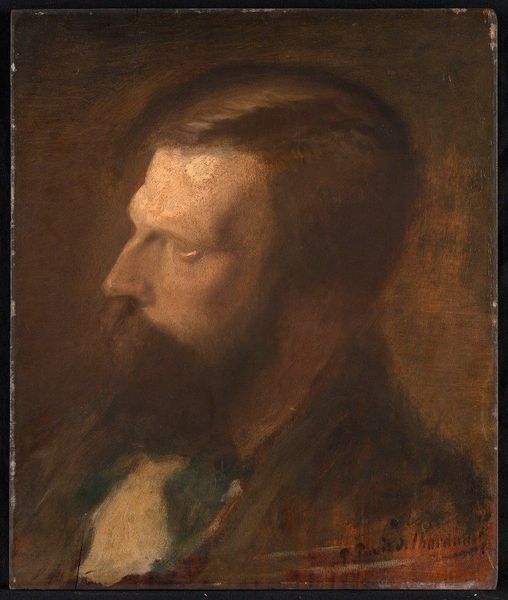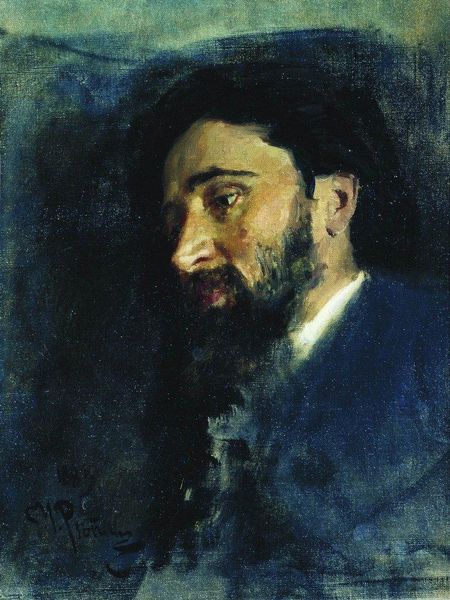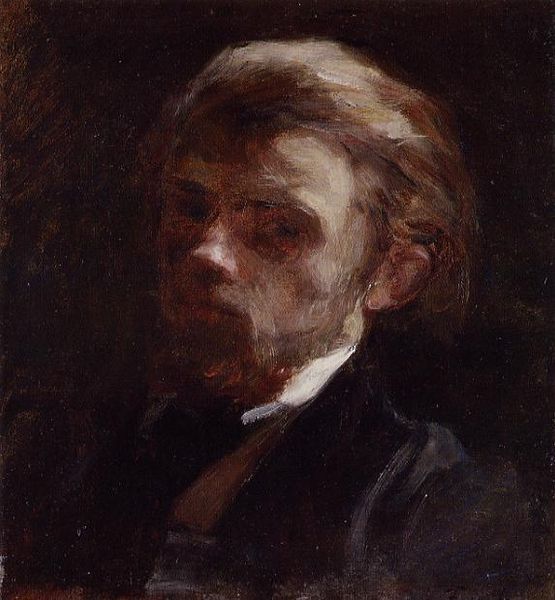
oil-paint, impasto
#
portrait
#
self-portrait
#
oil-paint
#
figuration
#
oil painting
#
impasto
#
romanticism
#
portrait drawing
Dimensions: 41 x 32 cm
Copyright: Public domain
Editor: So here we have Gustave Moreau's self-portrait from 1850, rendered in oil paint. I'm struck by the intensity of his gaze and how the golden light seems to almost halo him. What historical contexts might be shaping this self-representation? Curator: Well, consider the mid-19th century and the rise of Romanticism. Artists like Moreau were increasingly interested in the individual and their emotional experience. The "cult of the artist" was growing. How do you think this societal shift might influence how artists portrayed themselves? Editor: I guess they were trying to establish a certain image, crafting a persona that was intense and, well, special. It's interesting, though, because there’s also this almost humble quality to the painting in its lack of polish. Curator: Precisely. And the institutional forces at play should not be overlooked. Exhibitions and art criticism were becoming more prominent, offering artists platforms but also subjecting them to greater scrutiny. Creating a self-portrait like this one becomes a strategic act, right? It's about controlling your image in a rapidly changing art world. Does it challenge academic portraiture standards? Editor: Definitely. It feels much more personal and less idealized than traditional academic portraits. He’s showing us something, but holding a lot back, too. Almost creating a romantic aura of mystery and intelligence. Curator: The public role of art was being redefined during this era. Consider that with photography emerging, painting was freed, perhaps pressured, to explore inner states rather than pure representation. The "politics of imagery" began with self-representation that expressed personal vision as well as ambition. The gaze we feel is a consequence of how the subject viewed their own place within the artistic canon. What did you learn today? Editor: It's made me think about how self-portraits can be so much more than just likenesses – they're strategic statements reflecting not just the artist, but also the time they lived in and their role in shaping that world. Thank you. Curator: My pleasure. Thinking about Moreau, next time, imagine all these societal shifts happening while he created this, with societal pressures of a changing political system playing an influencing part. It enriches the experience even further!
Comments
No comments
Be the first to comment and join the conversation on the ultimate creative platform.
